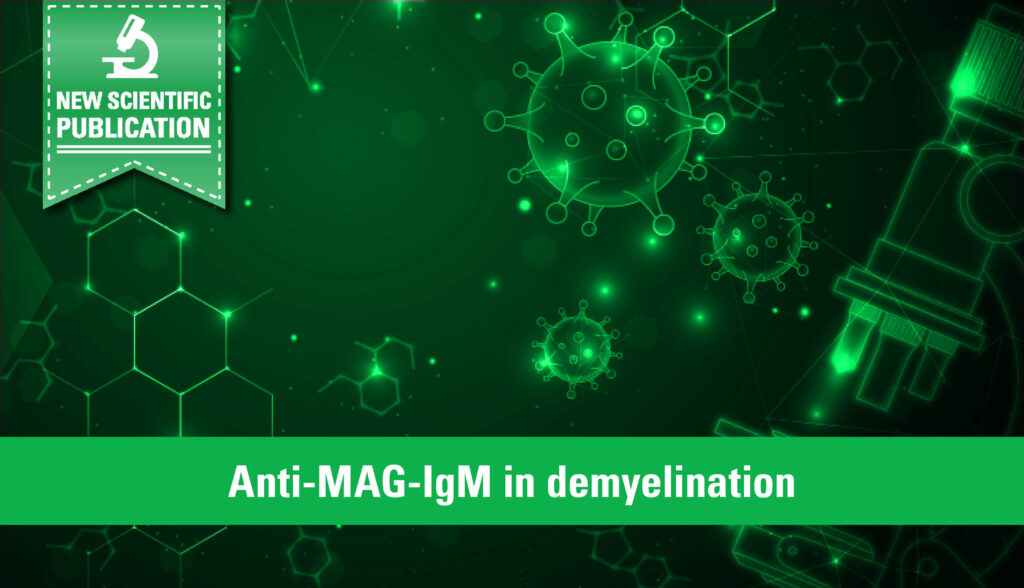A novel cell-based immunofluorescence assay (CBA) provides sensitive and specific detection of IgM antibodies against myelin-associated glycoprotein (MAG), as demonstrated in a study published in collaboration with scientists from the University of Verona and the Pediatric Research Institute in Padua, Italy. The Anti-MAG CBA is now available for research use*.
Anti-MAG-IgM antibodies are markers for an autoimmune demyelinating disorder of the peripheral nervous system, which manifests with sensory impairment. Anti-MAG-IgM play a pathogenic role in the disorder, as confirmed by pathological studies on nerve biopsies. The antibodies recognise the human natural killer-1 (HNK-1) glycoepitope, which is highly expressed on MAG.
The CBA is based on transfected human cells expressing the MAG/HNK-1 antigen. This technique allows expression of natively folded antigen in the membranes of the cell substrates, enabling detection of antibodies binding to conformational epitopes. A biochip of mock-transfected cells is incubated alongside the transfected cells as a control.
In the study, the CBA was compared to an established ELISA for detection of anti-MAG IgM, which is considered the gold standard. Antibody reactivity was determined in sera from 95 patients with clinical and neurophysiological evidence of anti-MAG-associated neuropathy and in control samples from 55 patients with other forms of peripheral neuropathy. Compared to the ELISA, the CBA yielded a sensitivity of 98.9% and a specificity of 100%. The positive predictive value amounted to 100% and the negative predictive value to 98.2%.
CBA technology offers many advantages. The standardised technique minimizes inter-assay variability and enables efficient preparation of large, standardised batches of substrate in a short time. The fluorescence stability allows multiple persons to analyse the slides, and images can be exchanged between centres. The analysis procedure is easy and can be performed in any laboratory familiar with indirect immunofluorescence. Fluorescent CBA is already used by many laboratories to detect other neural antibody markers, for example antibodies to neuronal cell surface antigens in autoimmune encephalitis or antibodies to aquaporin-4 in neuromyelitis optica spectrum disorders.
The authors conclude that the CBA is an easy and standardised technique for detection of antibodies to MAG, and it presents a sensitive and specific alternative to the more time-consuming ELISA. The CBA allows determination of antibody levels through titrations, which is important for elucidating clinical correlations. Larger follow-up studies will probe the relation between anti-MAG titer and clinical activity to confirm and expand the data.
The anti-MAG CBA expands EUROIMMUN’s unparalleled portfolio of assays for detection of neural autoantibodies, which encompasses more than 60 autoantibody specificities, including many novel and exclusive parameters.
Read more on the published study in the journal Frontiers in Neurology:
Mariotto S. et al. A novel cell-based immunofluorescence assay for the detection of autoantibodies to myelin-associated glycoprotein. Front. Neurol. 14:14:1289810 (2023). doi: 10.3389/fneur.2023.1289810
And discover our extensive range of assays for neural autoantibodies at
www.neuro-company.com
*For research use only, not for in vitro diagnostics. Regulatory status, precise intended and product availability use must be verified for the user’s individual jurisdiction.

